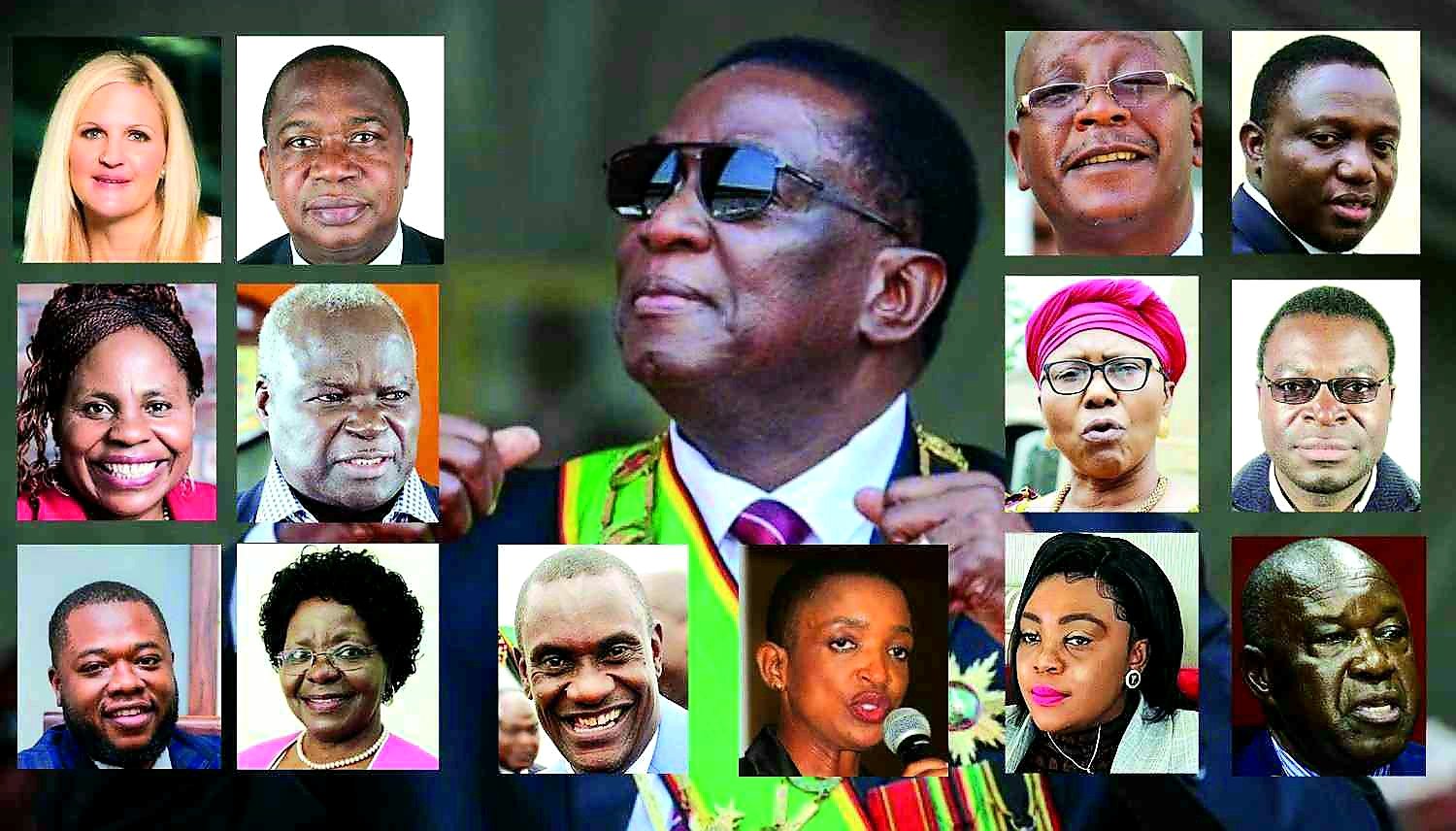In the dark unregulated corridors of the internet are whispers of a new cabinet proposal, which have naturally sparked both intrigue and skepticism. This aspirational lineup - featuring erstwhile protagonists of differing political persuasions like Saviour Kasukuwere, Nelson Chamisa, Elisabeth Valerio, and others - is not just another reshuffle proposal; it’s an audacious attempt at reimagining governance in Zimbabwe under yet another Government of National Unity form.
Is it not even illegal to propose a new government when one is still in place? Well, I'm only commenting because this is a teachable moment for future cabinets. By that I mean, our leaders would do well for the nation to disassociate from this lawyer-policitians-led inclination towards sharing polls spores of victory, and political appeasement. It is time we went back to what a cabinet must be - utilitarian and delivery oriented.
But here lies the rub: is this "proposed" cabinet less about sharing poll spores of victory and about crafting a utilitarian machine capable of steering Zimbabwe toward prosperity? Regrettably, no. Hence I do not share in the excitement it has generated, however remote its possibility to see the light of day is.

A fictitious cabinet proposal circulating online for a future Zimbabwe
Let’s dive deep into what makes a government tick - or fail - and how we can reimagine Zimbabwe’s ministries for maximum impact.
The Problem with Poll-Spore Politics
Let’s call it what it is: many cabinets are designed less for utility and more for appeasement. This proposed lineup seems no different. With multiple vice presidents, ministers scattered across overlapping portfolios, and glaring omissions (hello, Ministry of Health!), one has to ask - is this really about governing effectively for the betterment of us lesser souls or simply perpetuation of the mantra of keeping political elites happy?
For instance, where is the Ministry of SMEs? In 2023, small and medium enterprises accounted for over 60% of formal employment in Zimbabwe. Yet, according to recent monetary policy statements, these critical drivers of growth received only 4% of banking sector loans. Doesn’t that scream for attention? Instead of burying SME support under vague departments, why not give them their own ministry - or at least combine them strategically with Youth and Tourism, two groups disproportionately represented among SME operators?
And then there’s agriculture, which employs roughly 70% of Zimbabweans, yet remains woefully underserved. For a nation that prides itself as "agro-based" shouldn’t a dedicated Ministry of Agriculture, Food Security, and Rural Development be non-negotiable? Yet it's not in that phantom proposal.
Or better yet, why not integrate it with climate risk management given the existential threat posed by erratic weather patterns? After all, sustainable farming practices aren’t just good for farmers - they’re essential for national survival.
Streamlining Ministries for Efficiency
Here’s a radical thought: fewer ministries mean greater efficiency. Why does every department need its standalone empire when some functions naturally overlap? Take Women’s Affairs, for example. While undeniably important, shouldn’t gender issues fall under broader social development frameworks like Health or Education? By consolidating roles, governments save money, reduce bureaucracy, and focus resources on areas that truly matter.
Consider also the hypothetical Ministry of Industry, Trade, and SMEs. Merging industrial policy, trade negotiations, and SME support creates synergy. Imagine streamlined export incentives, simplified licensing processes, and targeted funding programs - all housed under one roof. Wouldn’t that turbocharge economic activity far more than current (and still mirrored in the "new" cabinet) siloed approaches ever could?
SOEs Deserve Their Own Super Ministry
State-Owned Enterprises (SOEs) control over 65% of Zimbabwe’s economy, yet they operate without centralised oversight. They are fragmented each being foisted to a ministry most related to what the enterprise does. A dedicated Ministry of SOEs would revolutionise accountability.
Picture this: a single entity managing performance metrics, ensuring transparency, and optimising returns on taxpayer investments. Sub-departments could be installed to handle government equity holdings it holds in local and foreign ventures. Yet another sub-departmemt will manage portfolios like Mutapa Fund and ZIDA, and even oversee privatisation efforts. All this frees up the Ministry of Finance to deliver even better results and pursue macroeconomic development goals. Sounds efficient, doesn’t it?
But wait, what about Energy? Given Zimbabwe’s untapped gas reserves and renewable potential, splitting power generation from petroleum exploration stifles progress. A unified Ministry of Energy and Petroleum, with distinct departments for electricity and oil/gas, ensures strategic alignment while leveraging global trends toward green energy. Who wouldn’t want that kind of forward-thinking leadership?
Data-Driven Decision Making
Numbers don’t lie, so let’s talk stats. According to the Reserve Bank of Zimbabwe’s latest reports, digital payments surged by an average of 33% monthly between January and June 2024. Clearly, Zimbabweans are embracing technology - but are our institutions ready to meet them halfway? A revamped Ministry of Information Technology, Communications and Digital Economy could drive innovation, foster e-commerce, and bridge urban-rural divides through affordable internet access. And yes, financial literacy initiatives must accompany these efforts. Remember those low-cost bank accounts exempt from maintenance fees? They’re a start, but much more needs to be done.
Worth Pondering Over
Why do we insist on clinging to outdated structures when evidence points to smarter alternatives? How long will Zimbabwe be on this mediocrity path disguised as inclusivity? And most importantly, can we finally prioritise competence over connections?
Conclusion: Toward a Leaner, Meaner Machine
Reforming Zimbabwe’s cabinet isn’t just about cutting costs - it’s about maximising value. Every ministry should serve a clear purpose aligned with national priorities. Whether it’s boosting SMEs, revitalising agriculture, or harnessing digital transformation, the goal must always be delivery, not distraction. A basic goal whomever made that cabinet proposal should have had in mind.
So, while we are while we busy bantering with what future cabinets must look like, I leave you with this final question: If Zimbabwe were to build its dream cabinet today - one focused solely on results rather than politics and rhetoric - what would yours look like?


